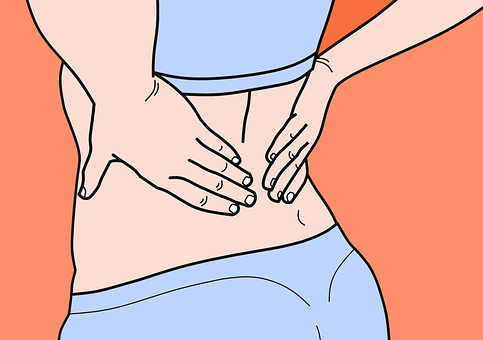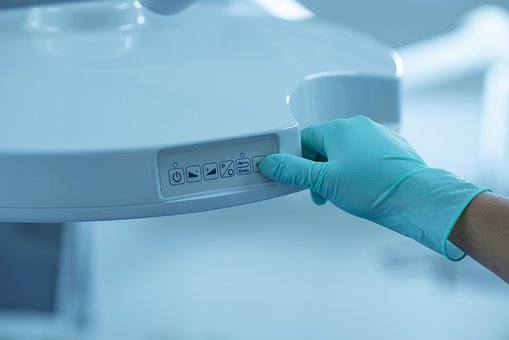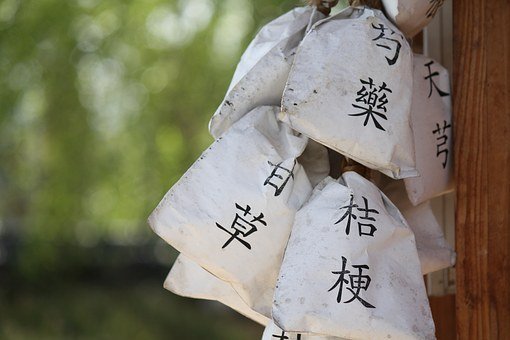What Is Ovarian Endometriosis?
Endometriosis can be diagnosed when it grows outside the uterine cavity, causes recurrent periodic bleeding, forms diseases and symptoms. The ovary is the most vulnerable part of the endometrium. About 80% of endometriosis is endometriosis of the ovary. Because of the hemorrhage of the luteal cyst and follicular cyst, chocolate-like cysts can also be formed, which is commonly known as "chocolate cyst" in the clinic.

Endometriosis of ovary
It's an ovarian disease, a kind of pathological changes of endometriosis because it's shaped like chocolate, so it's named chocolate cyst. Under normal circumstances, the endometrium in the uterine cavity is affected by female hormones in the body, and shedding occurs once a month, so menstruation is formed. However, if the endometrial fragments fall off and flow into the ovary with blood, an ectopic cyst will be formed.
Moreover, this kind of ectopic endometrium will also be affected by female hormones. With the menstrual cycle, it will shed blood repeatedly, so it will make the ovaries increase and have an impact on the female body. And this kind of cyst also can gradually become bigger but rarely occurs in the malignant change situation.
Symptom
The main symptoms of the patients were pelvic pain, abnormal menstruation, and infertility. Most of the symptoms were closely related to the menstrual cycle. 25% of the patients had no symptoms.
1. Pelvic Pain
It is the main symptom, which can be manifested as dysmenorrhea, chronic pelvic pain, coital pain, and acute abdominal pain.
2. Dysmenorrhea
Most patients can have dysmenorrhea, often secondary dysmenorrhea (not menstruation when the first tide has dysmenorrhea), and gradually increased. Most of the patients had pain in the lower abdomen and/or lumbosacral region from 1 to 2 days before menstruation, and the symptoms increased from 1 to 2 days after menstruation, and the pain relieved gradually after menstruation. Pain can sometimes radiate to the perineum, anus, and thighs.
3. Chronic pelvic pain
A small number of patients may have chronic pelvic pain, which is aggravated during menstruation.
4. Coital pain
When compact adhesion is formed between the Qiao capsule and the posterior depression, it can cause deep sexual intercourse pain, especially before menstruation.
#p#副标题#e#
5. Acute abdominal pain
The cyst may rupture with the increase of the pressure in the menstrual sac. Multiple small cyst rupture can cause transient pain in the lower abdomen or deep pelvis. If a large cyst ruptures, the fluid in the cyst may flow into the pelvic cavity and abdominal cavity, causing sudden severe abdominal pain accompanied by nausea, vomiting, and anal distention.

Acute abdominal pain often occurs before and after menstruation or menstruation, some of which may occur during ovulation, and most of them have sexual life or other causes of increased abdominal pressure before rupture.
6. Irregular menstruation
Patients may have menstrual abnormalities such as increased menstrual volume, prolonged menstrual period, endless menstruation, or bleeding in the prophase. These symptoms may be related to ovarian disease, anovulation, and luteal insufficiency.
7. Infertility
Patients with chocolate cysts can develop infertility. The causes of infertility are complex:
For example, if the disease is serious, the focus can cause extensive adhesion around the ovary and fallopian tube, and damage the function of collecting and transporting fertilized eggs in the fallopian tube;
The change of pelvic microenvironment is not conducive to pregnancy;
In addition, it is also related to the abnormal autoimmune function or ovarian function and the increase of spontaneous abortion.
#p#副标题#e#
Treatment
At present, there are many ways to treat chocolate cysts. Whether to operate or not has a set of medical standards.
1. Conservative treatment
The purpose of drug therapy is to inhibit ovarian function and prevent the development of the disease. When the diameter of the chocolate cyst is less than 5 cm, the patient has no special discomfort. They can take contraceptives under the guidance of the doctor, reduce the amount of menstruation, inhibit the growth and expansion of the chocolate cyst, and make the cyst shrink, but the process is a little longer.

2. Surgical treatment
If the growth speed of chocolate cyst is too fast to be contained, and the diameter of the chocolate cyst is more than 5cm, or the dysmenorrhea is very serious, or the pelvic environment is too poor for a long time to be pregnant, surgery is needed.
3. Interventional therapy
If you don't want to be conservative and don't want to be operated on, under the circumstances of excluding the possibility of malignant transformation of chocolate cyst, ultrasound puncture and fluid extraction is also one of the methods to be considered. After extraction, anhydrous alcohol and other drugs were injected to reduce fluid secretion and promote adhesion and closure of the cyst.
4. TCM Treatment
There is no evidence-based medical evidence to support the TCM treatment of the disease, but some TCM treatment methods or drugs such as herbal medicine Fuyan Pill can alleviate the symptoms and inhibit the growth of the cyst. It is recommended to go to a regular medical institution and treat under the guidance of doctors.
5. Other treatment
For infertile patients, they can go to the Department of assisted reproductive technology for treatment, including ovarian hyperstimulation (COH) - intrauterine insemination (IUI), in vitro fertilization-embryo transfer (IVF-ET).

The chocolate cyst is an estrogen-dependent disease. When a woman is postmenopausal or pregnant, the decrease of estrogen can make the chocolate cyst cured, but this good luck is not enjoyed by every patient with chocolate cyst. According to their own actual situation and the doctor's advice to develop a treatment plan.
The recurrence rate of chocolate cyst is 20% after 2 years of chocolate cyst removal and 40% - 50% after 5 years of treatment. A few of them need reoperation, and the treatment is more difficult.
You may also be interested in:
You may also be interested in
- Endometriosis and Debilitating Bowel & Bladder Pain: Diagnosis, Treatments, and Hope for Relief
- Struggling with Endometriosis Symptoms? Proven Back Pain and Painful Sex Relief Options
- Severe Endometriosis Treatment: Chronic Pelvic Pain Relief and Infertility Solutions
- New Endometriosis Pill Approved on NHS: What This Means for Patients and the Role of Traditional Chinese Medicine
- Can Endometriosis Be Endured Until Menopause?
Testimonials
- Adenomyosis with Ureaplasma Urealyticum Cured by Fuyan Pill
- Tubal blockage with hydrosalpinx can be cured by TCM shortly
- Fuyan Pill Helps A woman with Adenomyosis Get Pregnant
- A Woman with Hydrosalpinx Is Cured with Fuyan pill
- Pelvic Inflammatory Disease Testimonials
- Irregular Vaginal Bleeding and Endometrial Thickening Cured by Fuyan Pill
- Pruritus Vulvae and Frequent Urination: Mycoplasma Infection Cured after 2 Courses



